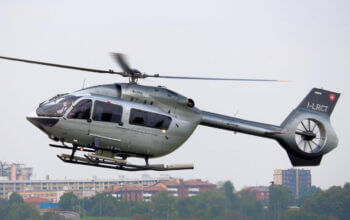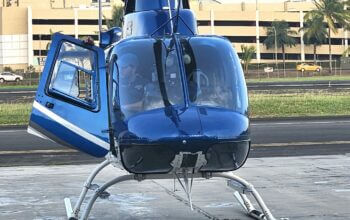Estimated reading time 8 minutes, 13 seconds.
Embraer Commercial Aircraft is flying high.
The new generation E190-E2 passenger jet was certified by Brazilian, European and U.S. regulators at the end of February and is scheduled to enter revenue service with launch operator Wideroe Airlines of Norway on April 24, 2018.

Wideroe is the largest regional airline in Scandinavia, and the acquisition of the E190-E2 is a major step for the airline, which serves more than 40 cities with an all-Bombardier fleet of 41 Dash 8 turboprops.
Only about 10 per cent of the 85 to 90 E-Jets scheduled for delivery in 2018 will be E190-E2 models, since the original E-Jet (now designated the E1) is still in high demand.
For the last four years, Embraer has confidently stated the re-engined and re-winged 97- to 114-seat E190-E2 will enter airline service on time and on budget in the first half of 2018.
Now, as Embraer’s customer service and technical teams deploy to Scandinavia to support the entry into service of the new E190-E2, senior executives from Boeing and Embraer are reportedly considering a joint venture to counter Airbus’ acquisition of rival Bombardier’s C Series program in late 2017.
Boeing Plus Embraer
The Brazilian government privatized Embraer in 1994, and the company made simultaneous initial public offerings in the U.S., but any change in shareholder control is still politically sensitive in Brazil. A joint venture between Boeing and Embraer is a more likely path than the sale of a large block of Embraer shares.
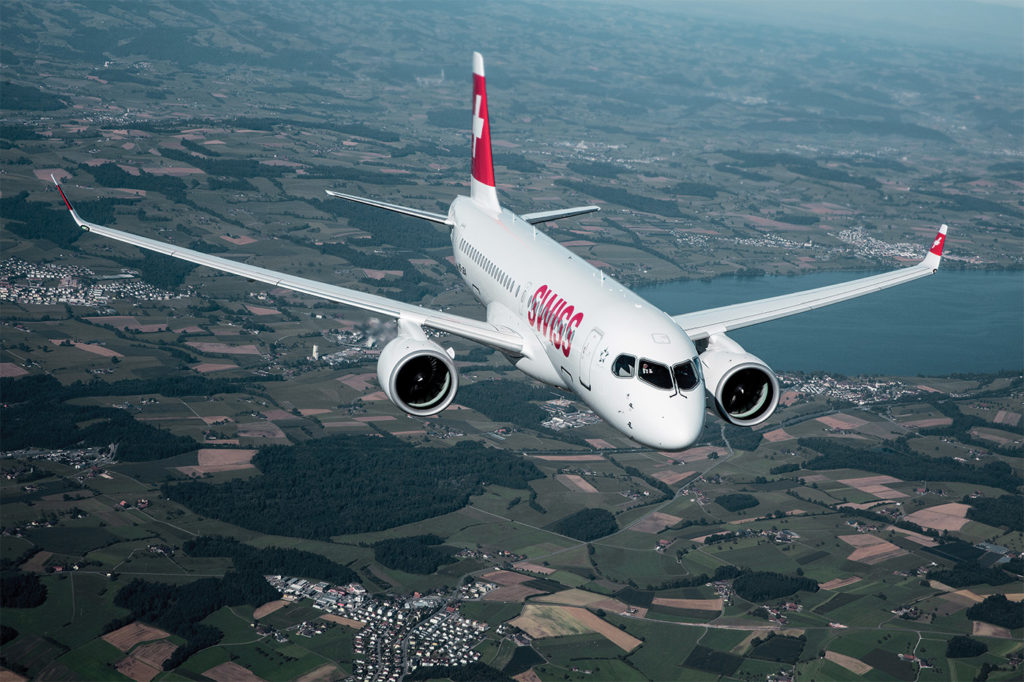
A joint venture between Boeing and Embraer would help rebalance the competitive landscape by providing Boeing with a portfolio of three new commercial jets–the Embraer E175-E2, targeted at regional airlines; and the E190-E2 and E195-E2, aimed at mainline carriers.
It also provides Boeing and Embraer the opportunity to have their aircraft “bundled” together in larger airline sales.
Competitive Response
Eight years ago, Embraer was riding high with solid orders for the E-Jet when the competitive landscape began to radically change.
First, manufacturers in Canada, Japan, China and Russia launched new clean sheet commercial aircraft designs–the Bombardier C Series, the Mitsubishi MRJ, the Comac ARJ21, and the Sukhoi Superjet 100–with Bombardier and Mitsubishi both selecting the new Pratt & Whitney PW1000G PurePower geared turbofan engine family, featuring significantly lower fuel consumption, emissions and noise.
Then, Airbus launched the re-engined A320neo family in December 2010 (with optional PW1000 and CFM International LEAP-1B engines) and Boeing launched the re-engined 737 MAX in August 2011 (powered exclusively by the LEAP-1B).
Embraer E2 Launched
Embraer launched the second-generation E2 at the Farnborough Airshow in 2012 to maintain market share by reducing E-Jet operating costs.
All three models of the E2 feature new generation Pratt & Whitney PW1000 geared turbofan engines and a new high-aspect ratio, swept-tip wing to maximize performance and lower fuel consumption.
The E2 features a fourth generation fly-by-wire flight control system, and redesigned landing gear and horizontal and vertical stabilizers to improve fuel efficiency.
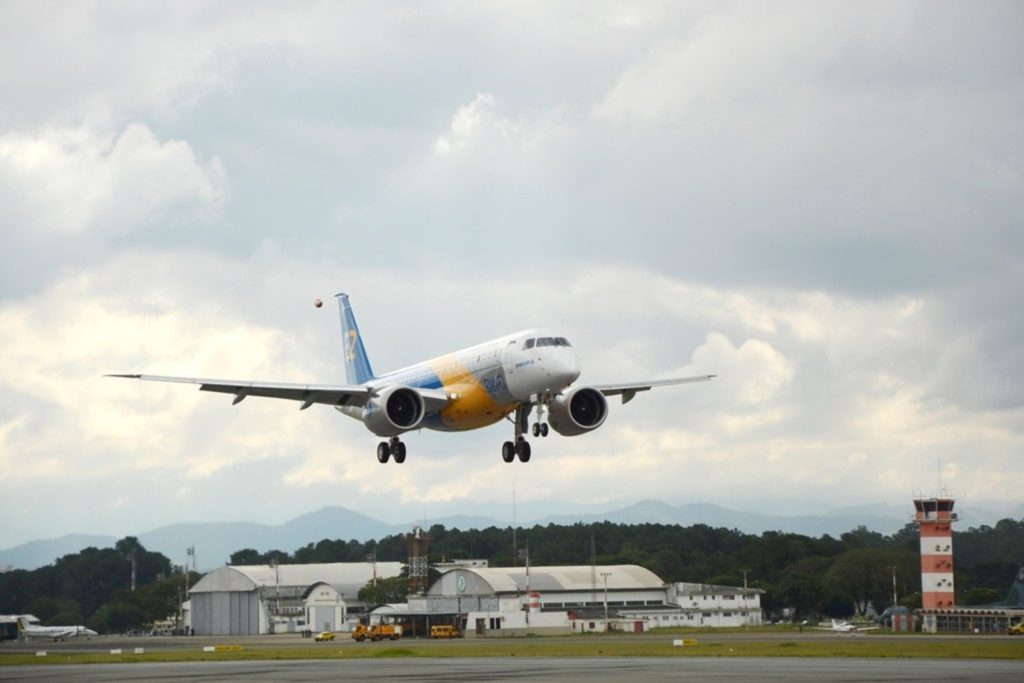
Its cockpit features Honeywell Primus Epic 2 avionics and the new passenger cabin was designed by the U.K. design firm PriestmanGoode with more personal space for passengers and larger overhead bins.
Brazilian landing gear manufacturer Embraer Liebherr Equipamentos do Brasil (ELEB) partnered with Alta Precision of Montreal to machine the main titanium landing gear structure for the E2.
Improved Performance
On May 23, 2016, the first of four E190-E2 flight test aircraft had its maiden flight, followed by the first of two E195-E2 flight test aircraft on March 29, 2017.
In terms of fuel consumption, Embraer reported in January that the E190-E2 proved to be 1.3 per cent better than originally expected, which it said represents a 17.3 per cent improvement over the current generation E190.

In terms of performance, the manufacturer said flight test results also confirmed the E190-E2 to be better than its original specification in takeoff performance. The aircraft’s range from airports with hot-and-high conditions, such as Denver and Mexico City, increases by 600 nautical miles compared to current generation aircraft.
The E190-E2’s range from airports with short runways, such as London City, also increases by more than 1,000 nm, allowing the aircraft to reach destinations like Moscow and northern Africa.
Renewed Competition
In 2017, Embraer forecast world demand for 6,400 new jets in the 70- to 130-seat segment over the next 20 years, representing a total market value of US$300 billion.
One of Embraer’s goals is to make the E2 an attractive upgrade option for airlines currently operating E1 jets, rather than adding an entirely new aircraft type to their fleets.
A major advantage of the E2 for an existing E-Jet operator, beyond lower fuel and maintenance costs, is that the pilots’ differences course for the E2 is only 2.5 days..
Embraer versus Bombardier
In the 100- to 130-seat segment, the competition is wide open, with the E190-E2 and E195-E2 competing against the Bombardier CS100 and CS300, as well as the Airbus A319, Boeing 737 MAX 7 and similarly-sized Chinese and Russian aircraft models.
In the regional airline market, airline-pilot scope clauses in the U.S. dictate the size and composition of regional airline fleets, which are currently capped at 76 seats and a maximum takeoff weight (MTOW) of 86,000 pounds (39,008 kilograms).
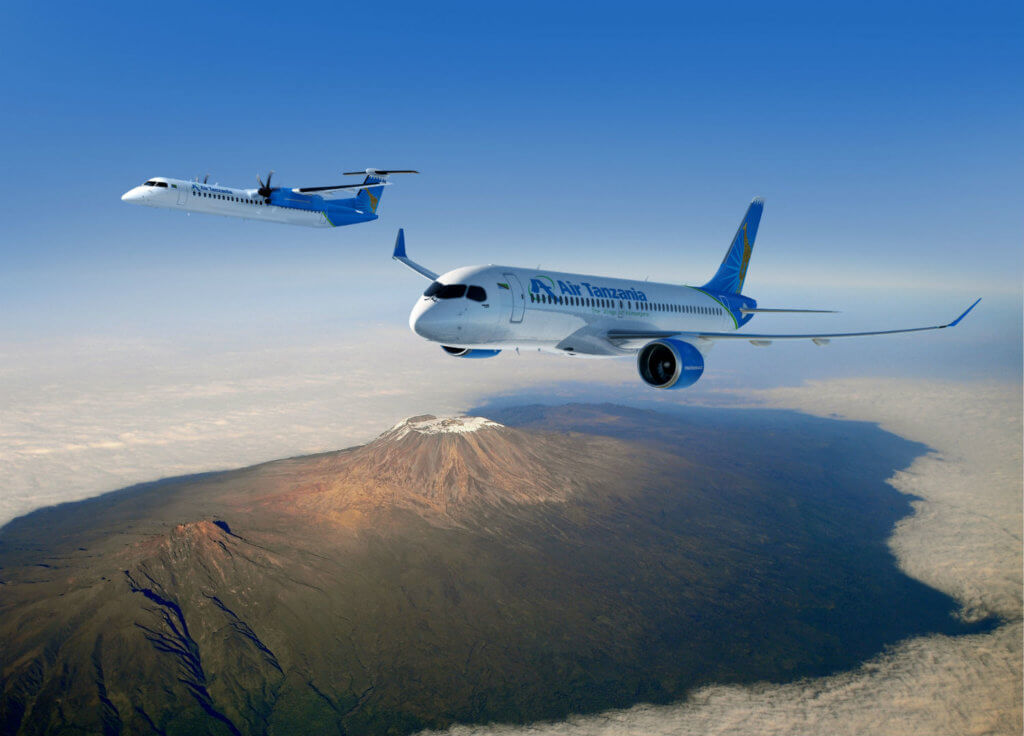
The first E175-E2 is expected to fly in 2018, but Embraer has pushed its entry into service back to 2021 while it awaits potential changes to the current cap on aircraft seating and MTOW.
The E175-E2 can accommodate 80 passengers in three-class seating and up to 90 in single-class seating, and has a MTOW of 98,767 pounds (44,800 kilograms), which exceeds current scope clause weight limits.
Embraer must therefore keep building the E175-E1 until the U.S. regional market can accommodate the E175-E2, which has significantly lower operating costs.





